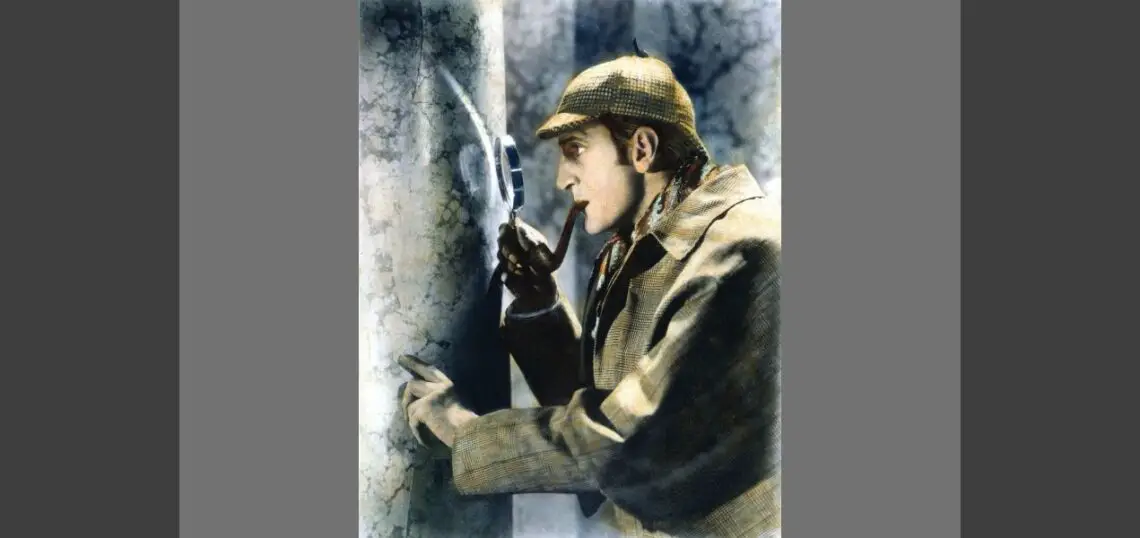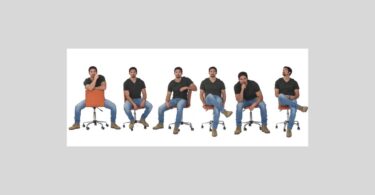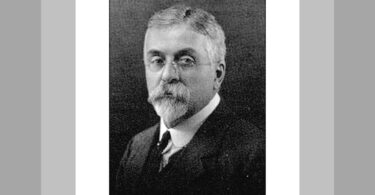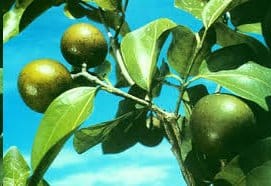You know the mythical and legendary Sherlock Holmes, don’t you? Using clues and signs that seem totally irrelevant and unimportant to solve a case…using methods seemingly unorthodox and bizarre, but eventually getting results…many of our cases in homeopathic practice are rather hermetic, and essentially those involving mental, emotional and psychological situations.
We have all lived through the scenario of one person (usually the wife) dragging another (usually the husband) to the consultation and asking us to treat him for anxiety, depression, anger, etc,….while he sits completely mute, anger or boredom on his face, arms crossed, not talking, barely answering any question with monosyllables, not at all cooperative. Of course all of those are symptoms and signs that can be used in repertorisation, adding to the partner’s complaints to find at least a starting remedy. However, from experience, the choice is immense and how do you decide which one to use?
Is there a methodology that allows us to have more clarity, more specific and individual details about a patient without having to resort to the medieval rack or to KGB questioning methods? Of course there is, otherwise you would not be reading this paper. That methodology is ancient, practical and simple to use, exactly what a Sherlock Holmes Homeopath would need to be able to perceive the fundamental imbalances in a patient.
The diagnostic methodology of Traditional Chinese Medicine (TCM) gives us the desired instruments. The use of soaps, perfumes and cosmetics partially remove the usefulness of the sense of smell (the patient’s body odour) and of facial discolouration. But the use of Pulse diagnosis and Tongue diagnosis remains an extremely simple yet accurate tool. Traditional Chinese Medicine does not differentiate between diseases of the body and diseases of the mind or the spirit, despite what can be read in recent publications. All symptoms and signs relate to patterns of energetic disturbances that can be understood by carefully listening to the patient, not only to the words but even more importantly to the way they are spoken or the way the patient refuses to speak. We look at him and especially focus on facial expressions, body language, the eyes and the tongue, and palpating with a special emphasis on that trademark of TCM, the pulses. Putting this information together leads to a specific pattern of imbalance independently of what actual or factual information the patient has accepted to reveal. Written differently, it is not what the patient says, it is the way he says it, or doesn’t, that becomes relevant. This is also true during the homeopathic interview, and yet some people have become very skilled at giving a very different picture of themselves through the use of words, sentences, and their way of speaking, that can confuse even the best observer.
Homeopathic remedies can also be understood in terms of TCM classification and a basic repertory can be created. Early French homeopaths and acupuncturists, like de la Fuye, the creator of Homeosiniatry, did correlate acupuncture points with specific homeopathic remedies. Comparing the TCM diagnosis and the remedies fitting that description narrows the choice, as with the system of repertorisation used by homeopaths, but might also reveal unsuspected issues that can then be discussed with the patient. For example, I regularly perceive Liver pulse disturbances in many patients; if there are no obvious liver organic pathologies or conventional drugs usage with known liver toxicity. I then ask them about their suppressed or repressed anger issues. This often opens the gates to a flood of information; it is not unusual that they tell me it is the first time they are talking about it. And I know I am on the right track when the pattern of the pulse changes immediately after having asked that question. Not only is that emotionally cleansing and a first step towards cure, it often changes the homeopathic repertorisation and the final prescription.
Homeopathy and TCM are both working with patterns. The energetic patterns of TCM lead to the energetic diagnosis of a perturbation, opening the way to an appropriate treatment that resets the pattern to normal. The homeopath will selectively look at the pattern of behaviour that is typical of the individual patient and correlate this information with the proving pattern of a remedy. But in doing that, the practitioner depends almost exclusively on non-objective information as given by the patient, his family and friends, and the interpretation made by the homeopath, which can in turn vary according to his own situation. Both approaches are highly individualised; they explore the patient, not a label; they are, in my opinion, different instruments analysing the status of the patient and allowing a precise treatment. Both systems need to be studied individually, the same way we study to interpret an ECG and an X-Ray separately, with both tests giving more information together than each one on its own. At the end of the day, it will become clear that both approaches are similar as they are both concerned with patterns of imbalance and ways to restore balance.
In order to be valid and effective, the practitioner needs a basic understanding of the theory of TCM, namely Yin and Yang, the Five Elements and their interactions; Organs, Emotions; the diagnosis of imbalance through Tongue examination and through Pulse palpation. There are plenty of basic texts available and soon a new book “Homeopathy through the Chinese lenses” will be published, that covers exactly what we are talking about. Let’s have a short preview.
In TCM, each organ is not limited to its anatomical Western function but has emotional and mental functions too.
Heart
The Heart is seen as the most important of the Organs, “The Monarch”. On the emotional/psychological level, it is the location of the Mind, Shen.
Liver
The Liver’s job is the planning and control of all the functions of the body through proper flow and direction of the Qi, hence its description as being the “The General”. In health, it is the source of courage and resolution.
Lungs
It is the Organ located between the environment, the outside, and the inner organism. It assists the Heart to control blood circulation and also has an important function in the body fluids management. It has the material part of the human soul, its corporeal, somatic manifestation.
Spleen.
Contrary to Western physiology, the Spleen is the major digestive Organ in TCM, through its association with the Stomach. French practitioners have bypassed that inconsistency by renaming it “Rate-Pancreas” (Spleen and Pancreas) so that the digestive central role of the pancreas is included in that function. Indeed the pancreas itself is not or rarely referred to in TCM and seems to have been considered as an appendage of the Spleen, justifying the French nomenclature. It is responsible for “Thought”, the ability to study, focus, concentrate and memorize facts and notions.
Kidneys.
The Kidneys are more than the Western excretory organs and source of renin, angiotensin and erythropoietin. They also include the adrenals and all their functions, the genitals in their reproductive function, meaning our genetic material, and are the origin of all Yin and Yang, Fire and Water. They are in charge of our willpower. Depression associated with lack of motivation and willpower will be treated in TCM through Kidney tonification.
Pericardium.
Giovanni Maciocia describes it as influencing relationships with other people and of course very much related to the Heart functions. Being the external covering of the Heart, it makes sense for it to be the “first line of emotional defence” that will prevent the Heart from being wounded.
Stomach.
The Stomach does not seem to control or host any specific emotion but can suffer from Excess Fire or Phlegm that could lead to mental confusion, anxiety or hyperactivity.
Small Intestine.
Psychologically interwoven with the Heart, it gives the ability for clear judgment and correct decisions, the choice between right and wrong.
Large Intestine.
This one does not seem to have any emotional function; at least I was never taught any and could not find any in the literature. As it is mostly an elimination viscera, we could imagine that it would have a role in getting rid of old ideas and concepts, preventing “mental constipation”.
Gallbladder.
The Gallbladder rules the ability to make decisions, rules courage and initiative, leading to action. A weak Gallbladder means timidity, indecision, easily giving up.
Urinary Bladder.
Yet another Viscera without known (at least to me) emotional or psychological implications. But we know the frequency of urinary symptoms in patients who are “pissed off” and the use of remedies like Staphysagria in those cases, so, as with the Large Intestine, we could imagine the function of eliminating potentially destructive emotions and feelings.
Emotions and Organs are interrelated and have reciprocal interactions:
Heart Joy
Liver Anger
Spleen Contemplation
Lung Grief
Kidney Fear
The emotions of Terror and Anxiety are related to the Qi in all 5 Zang (Organs); all organs can be affected by those emotions to various degrees. This relates in Homeopathy with the well-know rubrics “Ailments from….” and especially the emotional components like abuse, rape, anger, etc,…as well as the rubrics contained in “Fear”, “Anxiety”, “Delusions” and often “Dreams”.
Yet another link with homeopathy is the TCM concept of “meridian tropism of the drug”, by which specific medicinal substances act preferably on or through specific meridians and hence on or through specific organs. Although less specific, homeopathy also has “organ tropisms of remedies”: Aurum and the heart and vascular system; Lycopodium, Chelidonium and the Liver; Berberis and the kidneys, whereas polychrests have “polytropisms” that are well known.
Each organ has also different mental activities, and therefore an imbalance or injury of an organ can influence the emotional status and the reciprocal is also true. This helps us diagnose at the same time the organ involved and the emotion involved, allowing us to prescribe a remedy globally indicated at that time. It might not be the ultimate and most correct remedy, but pragmatically it will allow for some changes, often giving the patient the opportunity to start revealing himself and opening up; from there a more precise prescription becomes possible.
Homeopathic TCM Repertory aka Homeosiniatric Repertory.
This repertory has been created by combining different rubrics relevant to the Chinese diagnosis as perceived through tongue and pulse examination.
It covers Yin and Yang, the Elements, the Mental Activities of the Organs, the Emotions, the Organs themselves, the Tongue and the Pulses. The rubrics contain a lot of remedies, but experience has shown that their combination brings the number down dramatically. Combining this with a few other notions like food preferences, meteorological modalities, sleep patterns, etc,…as we do in each and every case leads to very small choice of specific remedies that can be studied and safely prescribed.
I am aware that this approach will encounter much resistance, especially within the world of purists, neo-Kentian, classicists. Look at it as yet another method to arrive at what Hahnemann taught us to aim for: curing the patient.
Reference: Homeopathy through the Chinese lenses: Homeosiniatry revisited. Dr. J. Rozencwajg, NMD. To be published in 2011.





I’m surprised that you would say that pulse and tongue diagnosis is a “simple” way to find clues. Medical doctors are taught to find 3 or 4 different pulses, but the TCM practitioners I know have studied to find literally dozens of pulses, and tell me that mastery takes a lifetime. One TCM practitioner that I used to see said she could identify 106 different pulses!
Yes, Joy, that is true, for the purpose of deeper understanding and diagnosis in TCM….but for the purpose of finding a more general thread, orienting the search for remedies and opening up the case, there is no need to go into that amount of details.
Hello
I think this is a great article. I think that there are possible ties between Acupuncture and Homeopathy and would love to learn more about these links and how they could be used in practice. I would be interested in the forthcoming book.
Best Wishes
Domenic
Great article, Dr. Joe. I really look forward to reading your book!
The logic and perception of Sherlock Holmes is fabulous. If a homeopath can, even closely, come to his acumen, he would make a very successful doctor! He wouldn’t need Dr. Watson to hear, “Elementary my dear Watson.”
Anyway, the concept is really very intriguing in the sense that learning homeopathy sufficiently is a challenge by itself and to understand “TCM” and its application would be a “double jeopardy”. The good Doctor is right when he says, “I am aware that this approach will encounter much resistance, especially within the world of purists, neo-Kentian, classicists.”
Nisar
If there are universal principles underlying disease and health, we would not expect homeopathy to have the “whole truth.” We should be open to learn from other medical traditions, rather than confining ourselves to a single system, which, while an amazing modality, we all know does not cure all patients. There are several books that cover the intersection of homeopathy and TCM. I will mention a few here that I have found of use: Jerry Kantor’s “Interpreting Chronic Illness: The Convergence of Traditional Chinese Medicine, Homeopathy, and Biomedicine.” Hanspeter Seiler’s book, “Die Weiheschen Druckpunkte” (in German) has both the history of the Weihe points from original & difficult to obtain sources and a practical section organized by remedy with location of each tender point. This book has proven invaluable as a simple method of confirming (or eliminating) possible remedies. The lectures of Peter Fraser on youtube. (search “NES Energetic Integrators) expand on the TCM meridians from a QED perspective. Fraser was familiar with homeopathy and used his own “infoceuticals.” I cannot speak for the effectiveness of his system, but his grasp of the underlying energetic system is intriguing. His book is, “Decoding the Human Biofield.” If this is your cup of tea, so to speak, Eileen McKusick’s book, “Tuning the Human Biofield” explains how sound therapy introduces harmonic information into the energy field. Many of the emotional patterns in her biofield maps are confirmed in both TCM and homeopathy. I congratulate Dr. Rozencwajg on his far-ranging curiosity and broad-minded grasp of multiple healing modalities. There is much to learn in his books.